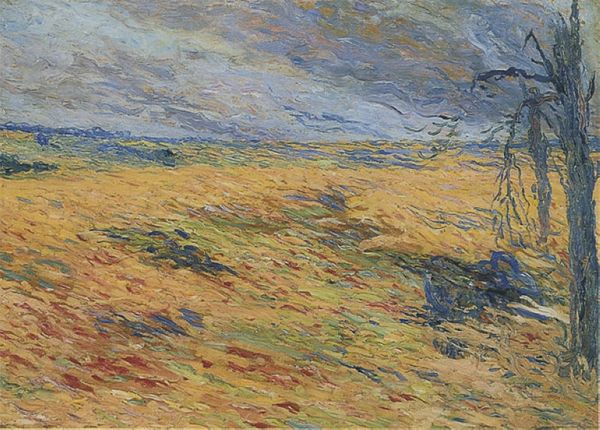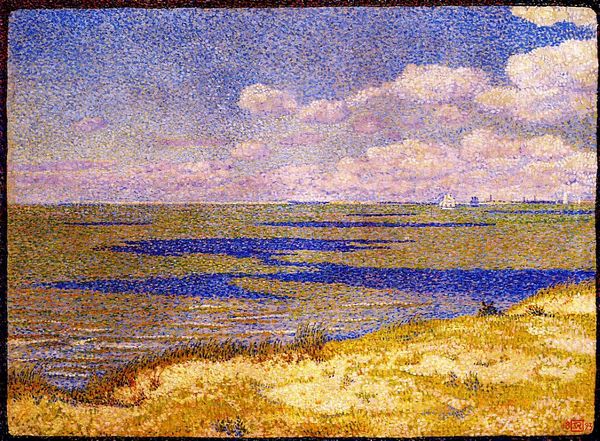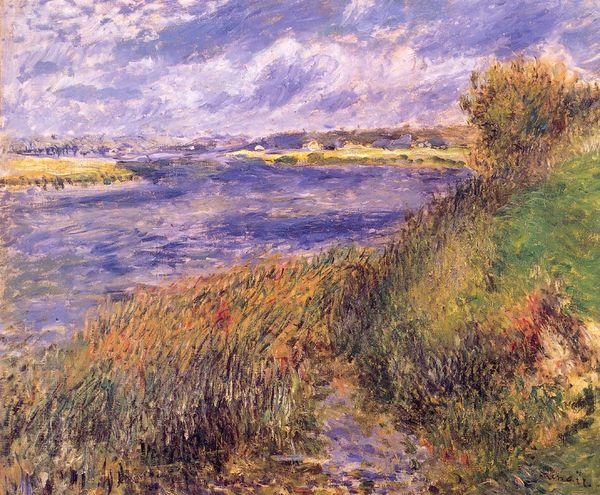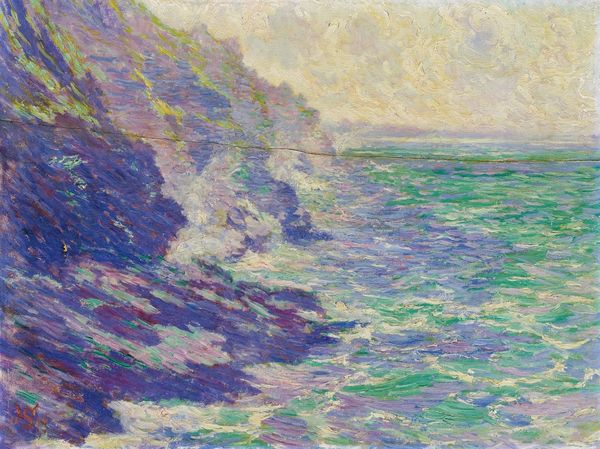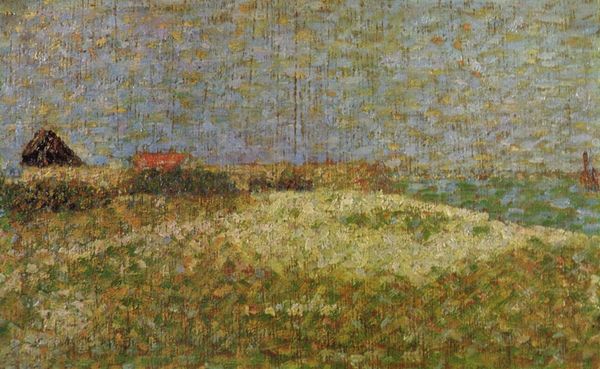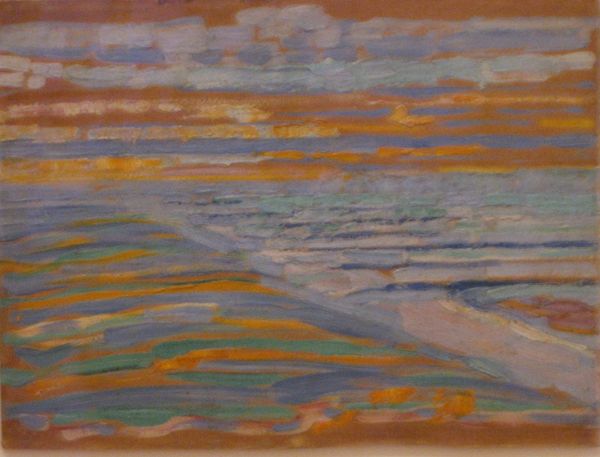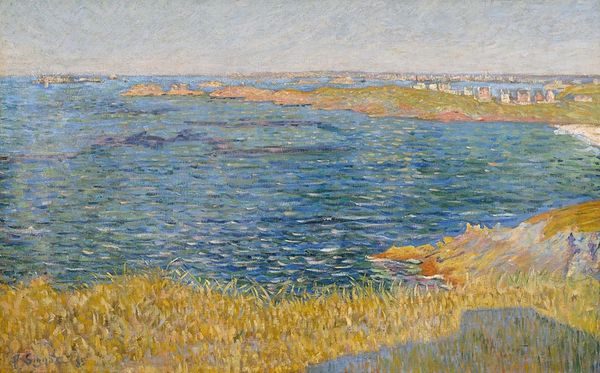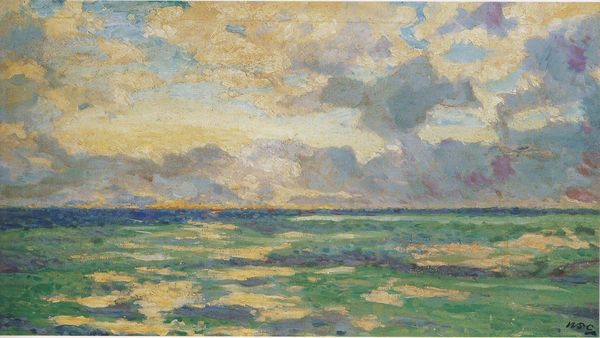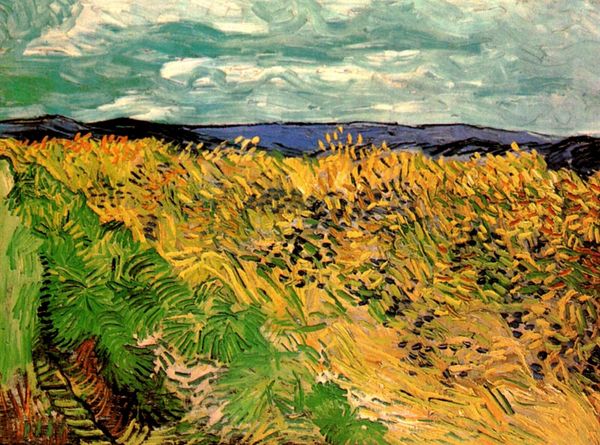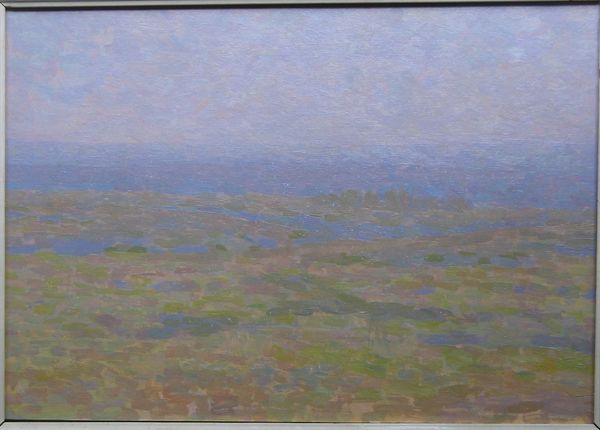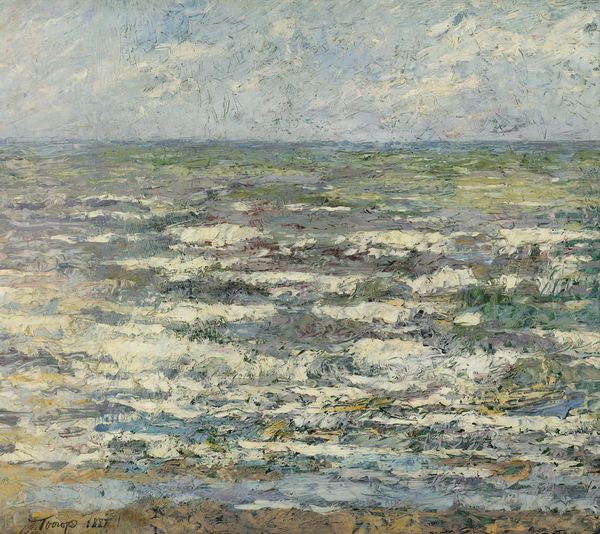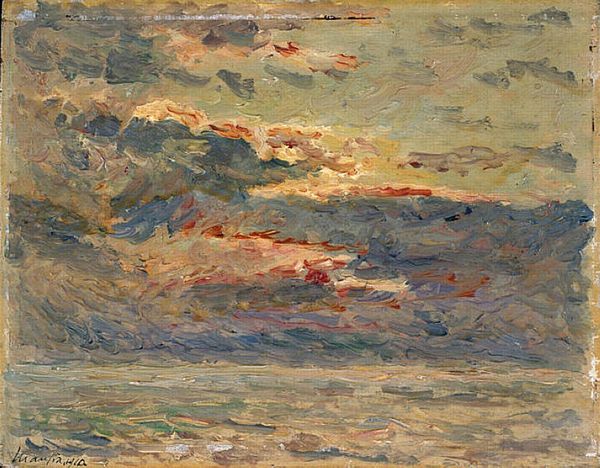
plein-air, oil-paint
#
impressionism
#
grass
#
plein-air
#
oil-paint
#
landscape
#
impressionist landscape
#
seascape
#
men
#
water
#
line
Dimensions: 67.3 x 55.3 cm
Copyright: Public domain
Curator: Before us hangs Theo van Rysselberghe's "The Dunes Zwin, Knokke," an oil on canvas created in 1887, offering a glimpse into the Belgian coastline. Editor: The overwhelming impression I get is one of serenity, but also of…transience. The colors are soft, the brushstrokes hazy. Curator: That haziness speaks directly to the Impressionist style Rysselberghe was embracing at the time, doesn't it? Capturing the ephemeral effects of light and atmosphere through visible brushwork. The choice to paint en plein air emphasizes this process. Editor: I see layers upon layers of symbolism embedded within that apparent simplicity. Water as a representation of subconscious, dunes signify challenges to be overcome, and the tall grass in the foreground speaks of growth and adaptability. It makes you think of human relationship to landscape itself. Curator: It’s fascinating how Rysselberghe's technique obscures the labor that went into it. Observe the interplay between the sandy shore in contrast to the loose brushwork; the construction of that scene relies heavily on materiality and production—the very craft is foregrounded here. Editor: Yet these colors, this muted palette – the grays and blues of the sea, the ochres of the sand – evoke an atmosphere of calm melancholy that's echoed in many Romantic seascapes, drawing heavily on themes of the sublime. There's something ancient there too. Curator: The scene reflects more than the sublime. The tools, the location, the labor behind Impressionism point toward specific socioeconomic conditions of the late 19th century. Rysselberghe, though from a bourgeois family, engaged directly with portraying landscapes frequented by an increasingly mobile society, a change enabled by industrial developments. Editor: It reminds me that even these landscapes served symbolic functions within a larger social framework, operating as sites of leisure and cultural expression within evolving societal ideals. Curator: Precisely! The making of art mirrors the era's social transformation, as much as they carry inherent meaning. Editor: What is clear is the skill which combines into a very thoughtful painting, ripe with meaning when looked at in its entirety. Curator: I agree! By considering both production and symbolic weight, we see “The Dunes Zwin, Knokke” reveals a rich tapestry of art history and the shifting social environment which enabled the scene we face today.
Comments
No comments
Be the first to comment and join the conversation on the ultimate creative platform.

